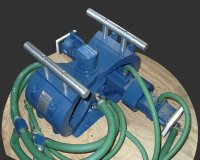Crossed-Field Amplifier (Amplitron)

input
output
of resonant-cavities
Figure 2: Subset of the cycloidal electron paths into a Crossed-Field Amplifier
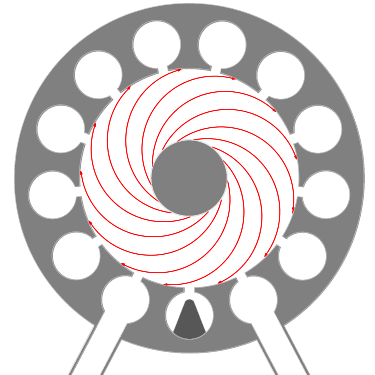
input
output
Figure 2: Subset of the cycloidal electron paths into a Crossed-Field Amplifier
Crossed-Field Amplifier (Amplitron)

Figure 1: water-cooled Crossed-Field Amplifier L–4756A in its transport case
Other names are sometimes used for the Crossed-Field Amplifier in the literature also:
- Platinotron
- Amplitron
- Stabilotron
- Platinotron
- Amplitron
- Stabilotron
- Platinotron
- Amplitron
- Stabilotron
The Crossed-Field Amplifier (CFA), is a broadband microwave amplifier that can also be used as an oscillator (Stabilotron). It is a so-called Velocity-modulated Tube . The CFA is similar in operation to the magnetron and is capable of providing relatively large amounts of power with high efficiency. In contrast to the magnetron, the CFA have an odd number of resonant cavities coupled with each other. These resonant cavities work to as a slow-wave structure: an oscillating resonant cavity excites the next cavity. The actual oscillation will be lead from the input waveguide to the output waveguide.
The electric and magnetic fields in a CFA are perpendicular to each other (“crossed fields”). Without an input signal and the influence of both the electric field (anode voltage) and the magnetic field (a strong permanent magnet) all electrons will move uniformly from the cathode to the anode on a cycloidal path as shown in figure 2. (This case should be avoided in practice, because the CFA will generate a high level of noise then.)

accelerated by RF- oscillation
decelerated
by RF- oscillation
Figure 3: The input signal starts the excitation of the first resonant cavity
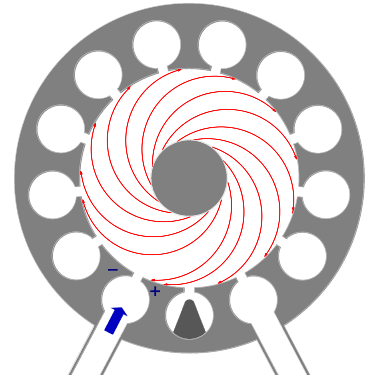
accelerated by RF- oscillation
decelerated
by RF- oscillation
Figure 3: The input signal starts the excitation of the first resonant cavity
If the input-waveguide introduces an oscillation into the first resonator (as shown in figure 3), the vanes of the resonator gets a voltage difference synchronously to the oscillation. Under the influence of this additionally field flying past electrons get acceleration (at the positively charged vane) or they are decelerated (at the negatively charged vane). This causes a difference in speed of the electrons. The faster electrons catch the slower electrons and the forms electron bunches in the interaction space between the cathode and the anode. These bunches of electrons rotates as like as the “Space-Charge Wheel” known from the magnetron operation. But they cannot rotate in full circle, the “Space-Charge Wheel” will be interrupted because the odd number of cavities causes an opposite phase in the last odd cavity (this bottom one between the waveguides). To avoid a negative feedback, into this resonant cavity may exist a bloc containing graphite to decouple input and output.)
The oscillation is still very weak into the first cavity. But the electron bunches will hit the vanes of the following cavities and will dispense their energy synchronously to the oscillation. The alternating microwave field causes the electrons to alternately speed up and slow down near the next cavity. Simultaneously, the anode near the vanes is hit of the first electrons in cycle of oscillation. This causes amplification: the oscillation will be stronger from cavity to cavity therefore. At the resonant cavity with the coupled output-waveguide these electron bunches are solved: all but electrons hit the anode and causes the anode current.
The bandwidth of the CFA, at any given instant, is approximately plus or minus 5 percent of the rated center frequency. Any incoming signals within this bandwidth are amplified. Peak power levels of many megawatts and average power levels of tens of kilowatts average are, with efficiency ratings in excess of 70 percent, possible with crossed-field amplifiers.
To avoid ineffective modes of operation the construction of CFA contains strapping wires like to as used in magnetrons. Because of the desirable characteristics of wide bandwidth, high efficiency, and the ability to handle large amounts of power, the CFA is used in many applications in microwave electronic systems. When used as the intermediate or final stage in high-power radar systems, all of the advantages of the CFA are used.
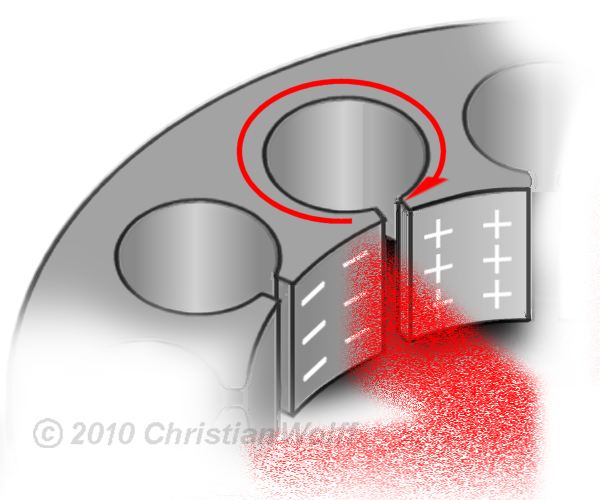
Figure 4: Interaction between a cavity resonator and the rotating “Space-Charge Wheel”
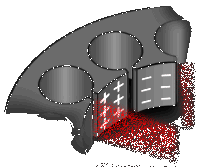
Figure 4: Interaction between a cavity resonator and the rotating “Space-Charge Wheel”
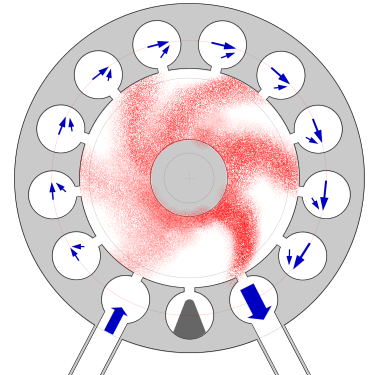
Figure 5: The interrupted “Space-Charge Wheel” into a Crossed-Field Amplifier
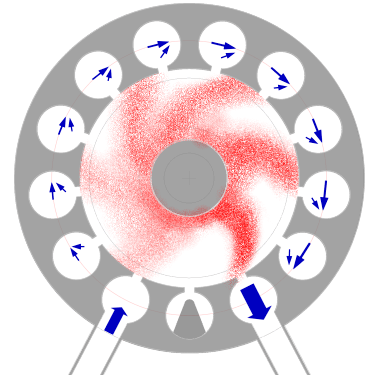
Figure 5: The interrupted “Space-Charge Wheel” into a Crossed-Field Amplifier
The amplifiers in this type of power-amplifier transmitter must be broad-band microwave amplifiers that amplify the input signals without frequency distortion. Typically, the first stage and the second stage are traveling-wave tubes (TWT) and the final stage is a crossed-field amplifier. Recent technological advances in the field of solid-state microwave amplifiers have produced solid-state amplifiers with enough output power to be used as the first stage in some systems. Transmitters with more than three stages usually use crossed-field amplifiers in the third and any additional stages. Both traveling-wave tubes and crossed-field amplifiers have a very flat amplification response over a relatively wide frequency range.
Crossed-field amplifiers have another advantage when used as the final stages of a transmitter;
that is, the design of the crossed-field amplifier allows rf energy to pass through the tube
virtually unaffected when the tube is not pulsed. When no pulse is present, the tube acts as
a section of waveguide. Therefore, if less than maximum output power is desired, the final
and preceding cross-field amplifier stages can be shut off as needed. This feature also allows
a transmitter to operate at reduced power, even when the final crossed-field amplifier is defective.
If the anode voltage is switched on then the CFA will provide a gain of
3 to 20 dB.
Note: William C. Brown's work on adapting magnetron principles to create a new broadband amplifier resulted in the “Amplitron”, a trademark of the Raytheon Manufacturing Company for the Raytheon line of crossed-field amplifiers today.

